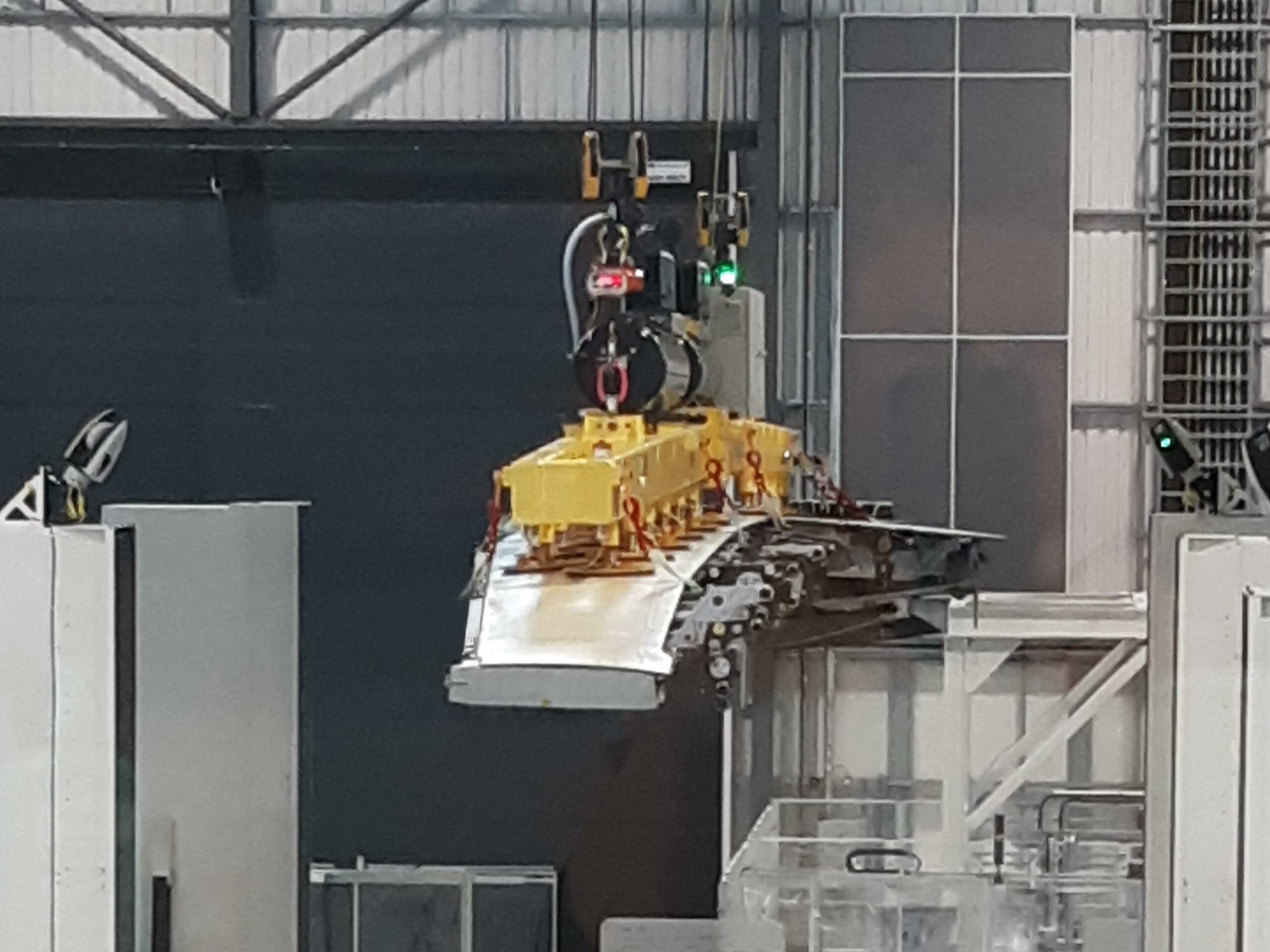
wing scaled
Covid caused some delays, but the development of Airbus Wing of Tomorrow has got to the next stage with the final assembly of the first prototype. It is the first of three composite demonstrator wings that will be thoroughly tested and evaluated before the lessons can be applied to the wing designs for future Airbus aircraft. First Airbus Wing of Tomorrow ready for testing.
The Wing of Tomorrow program was launched back in 2016. The wing has been designed in Filton, where most Airbus wings have found their origins. Composite parts, including the wing cover, were then produced by the National Composite Centre in Bristol before they went to the Airbus Advanced Manufacturing Research Center in Broughton for final assembly in September. This has now been completed, as Airbus Chief Technical Officer Sabine Klauke and Sue Partridge, previously Head of the Wing of Tomorrow program and now the Head of Airbus Filton, detailed during a press conference in Farnborough.
Partridge explained that the program has three main objectives: “The first is about improving aircraft performance, as the wing, alongside the engines, is the biggest lever we have in the performance of the aircraft. Wing of Tomorrow looks at an architecture that really gives us low drag, good lift, very good fuel efficiency, long wings.”
“The second objective is around our cost performance, so how can we make a high-performance, carbon wing in order to reduce weight, at a low cost. And the third objective is to develop the technologies to be able to manufacture at a high rate and being ramped up to those rates.” Particular attention has been given to the industrial system to make production at higher rates possible. “We are a technology program, so we are able to push the boundaries of what might be possible”, Partridge said.
Over forty companies, most of them in the UK, plus techno centers across Europe are involved in the Wing of Tomorrow program, but testing will be done in a special facility in Filton. Three demonstrators will eventually be available for testing, with structural integration, equipping, and production rate capabilities as the main areas that will be closely monitored. The first wing is now fully assembled, while the second one is now in the jig for assembly. This one will be used in Filton for the full-scale structural tests.
While there is no specific deadline as to when the technology program should be completed, Partridge said that mature technology will be made available whenever Airbus is deciding that it wants to do a new wing from both a design and industrial perspective. Klauke added that Airbus also has other programs that look at extra wing performance and at aerodynamic design. At the same time, it is included in Airbus’ Digital Design and Manufacturing philosophy DDMS, in which aircraft will be fully designed, tested, and manufactured in a virtual environment before the first metal or composite is cut.
Views: 34



